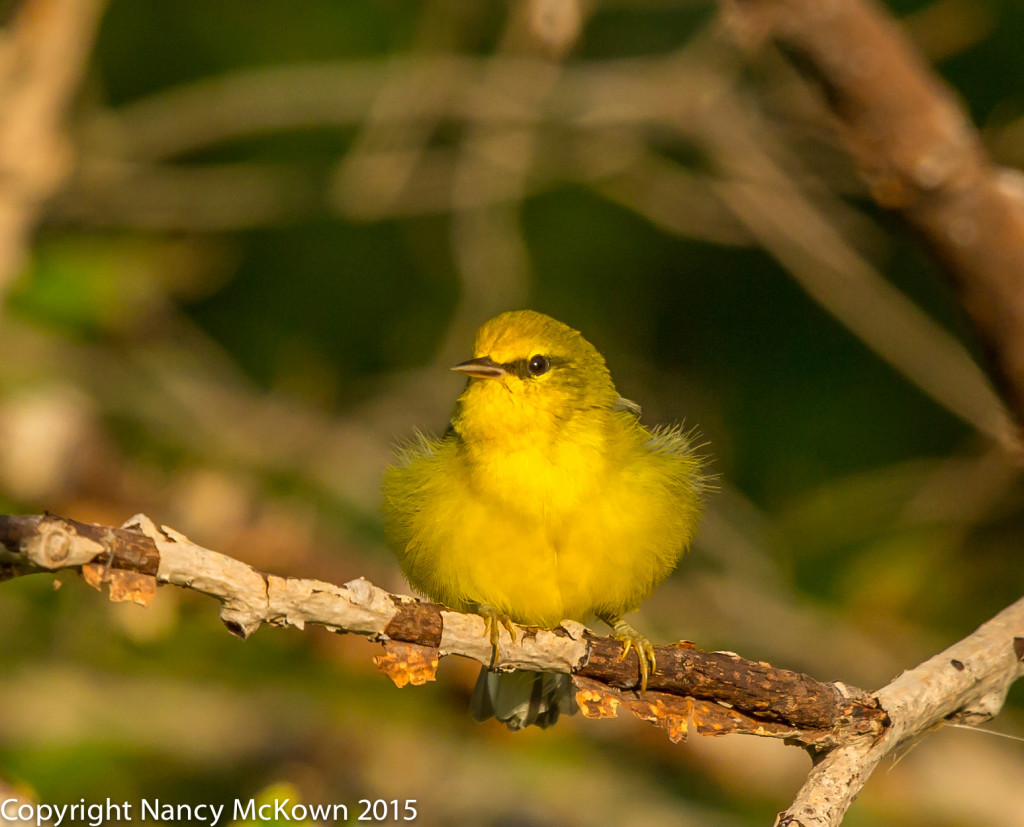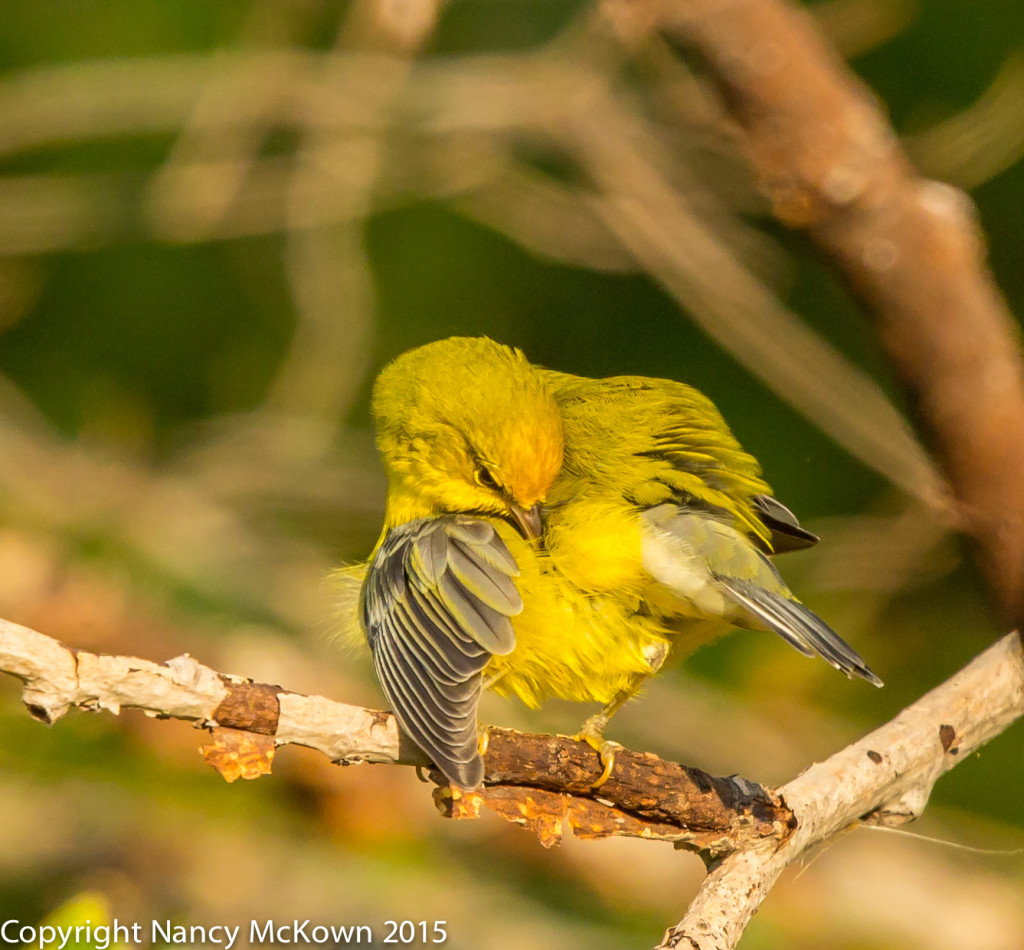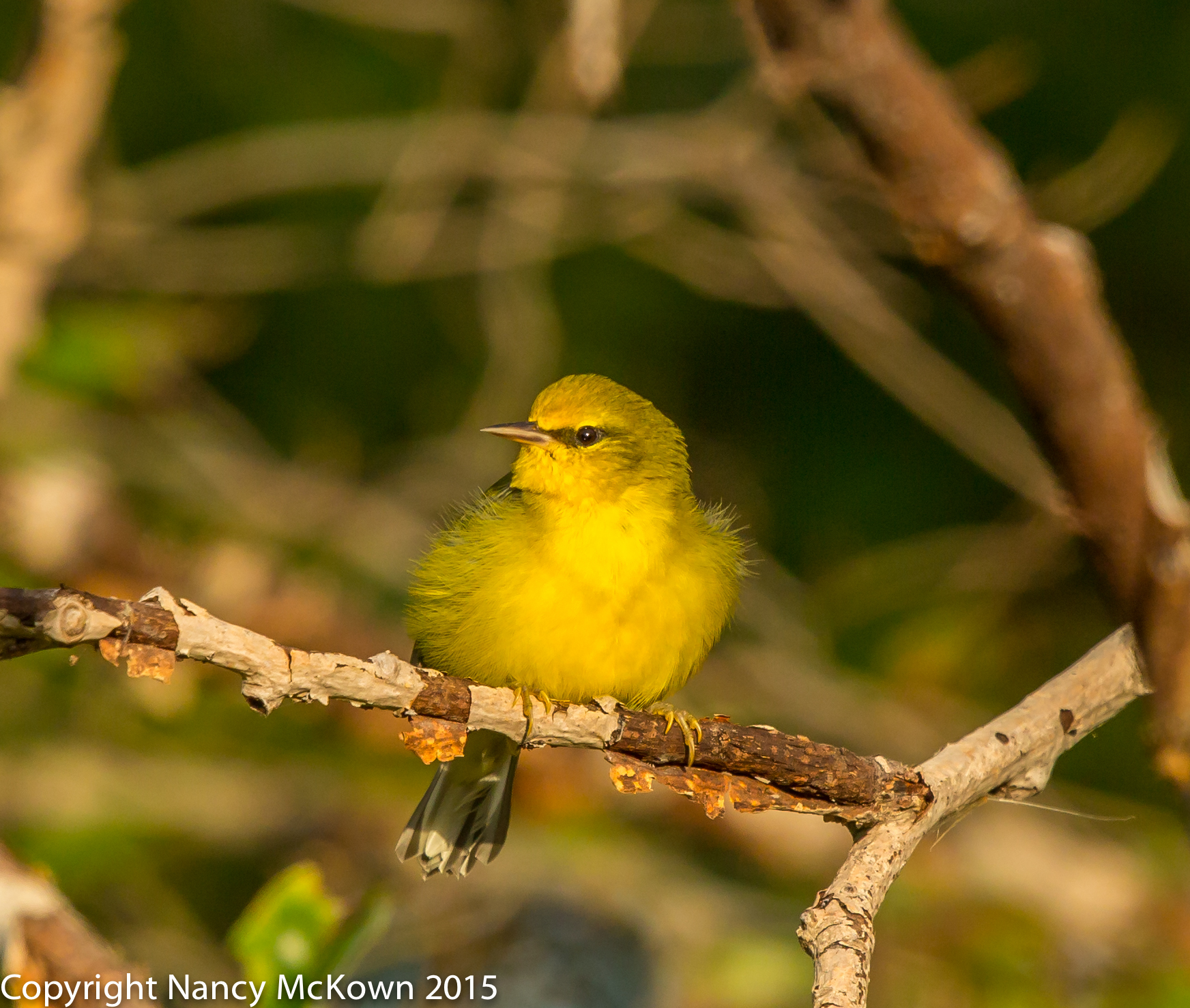Searching for Blue Winged Warblers

Preening. Looking
Shiny, Foofy, and New.
ISO1000; f/8; 1/1000 Second
Both the male and female Blue Winged Warblers are tiny, brightly colored balls of energy, tempered only by their quiet and bashful natures. Since the summer began, I have made a point to drive to a mostly deserted country road in the Allegan Forest next to a cluster of dense, brambly foliage at the forest edge. There, I watch and wait for a nesting pair of Blue Winged Warblers to appear. I know they’re in there because I have photographed many a blurry snapshot of their distinctive eyes as they stare at me from the thick brush. Those eye markings are hard to mistake. Looks like someone took a dark eyeliner and drew a heavy black line from the outside corner of one brown eye, past the pointy beak and through the other brown eye. Quite a striking attribute when drawn atop a bright yellow face.
How Long Should A Photographer Wait?
I pull off the road at the opening of a small 3′ x 3′ passage into the brush. There within, I can see a little secluded space, amply lit by the morning sun, where the warblers just might leave the comfort of their nesting area to perch on dead and peeling branches. (It would be so exciting if there are Blue Winged fledglings about.) My eyes are weary from raking the foliage, looking for the ever-so-slight warbler movement (like softly falling raindrops) on the interior branches. I wait….. how long should a photographer wait? It’s 7:30 a.m. and I make a pact to leave by 8:00am- if I don’t see any action.
It’s past 8:00 am and I’m still waiting; still hoping. The light continues to softly illuminate the perch on which the lens in trained. I think I see second hand movement- reverburation from the forest floor. Blue Winged Warblers commonly build nests on or near the ground, but so do many other forest dwellers. It’s impossible to know because I can not see through the low lying brush. My lens is resting on the storage bin that I keep in the passenger’s front seat. No need to worry about twisting and contouring my body to maneuver the lens..my only focusing option is to follow the light through this small and under-grown portal.
I see a flash of yellow. The male Blue Winged Warbler is bustling about, within partial view. Tentative and watchful, he knows I’m there and looks me over with those eye-lined eyes. Somehow, I pass inspection because he hops onto the peeling branch right in front of the lens and begins preening. He’s so tiny, and a good 20 feet away. I will have to do some cropping- but other than that I’ve got a perfect shot.

Taking Pains to Groom His Feathers.
ISO1600; f/8; 1/1000 Second
Healthy Feather Grooming
Birds groom themselves multiple times a day. Good feather maintenance is essential to survival. The preen gland (uropygial gland- located at the base of the tail feathers) supplies the secretions needed to keep their feathers in optimal flying condition. Birds rub their bills and heads with these secretions and then methodically slather this mixture all over their feathers and feet, picking out unwanted dust, dirt and parasites with their beaks. (No doubt somewhere in the parasitic mix, are beneficial organisms essential to healthy feather grooming.)
Before flying off, this Blue Winged Warbler takes a few minutes to show off his freshly groomed plumage. His feathers look like they were professionally washed, blow-dried and styled. And then he is gone.
Warbler Waiting
More times than not, I find myself waiting for birds long past the time I pre-set in my mind to move on, and coming back home with nothing. For warbler waiting, all it takes to keep me on task at one location is a slight foraging movement. It’s not an efficient use of my time, but my self imposed deadlines fly by and I enjoy the sights and sounds that come with a glorious day in the woods. This time, I have beautiful Blue Winged Warbler photos to show for my patience.
To read more about photographing preening birds, please visit this post.









